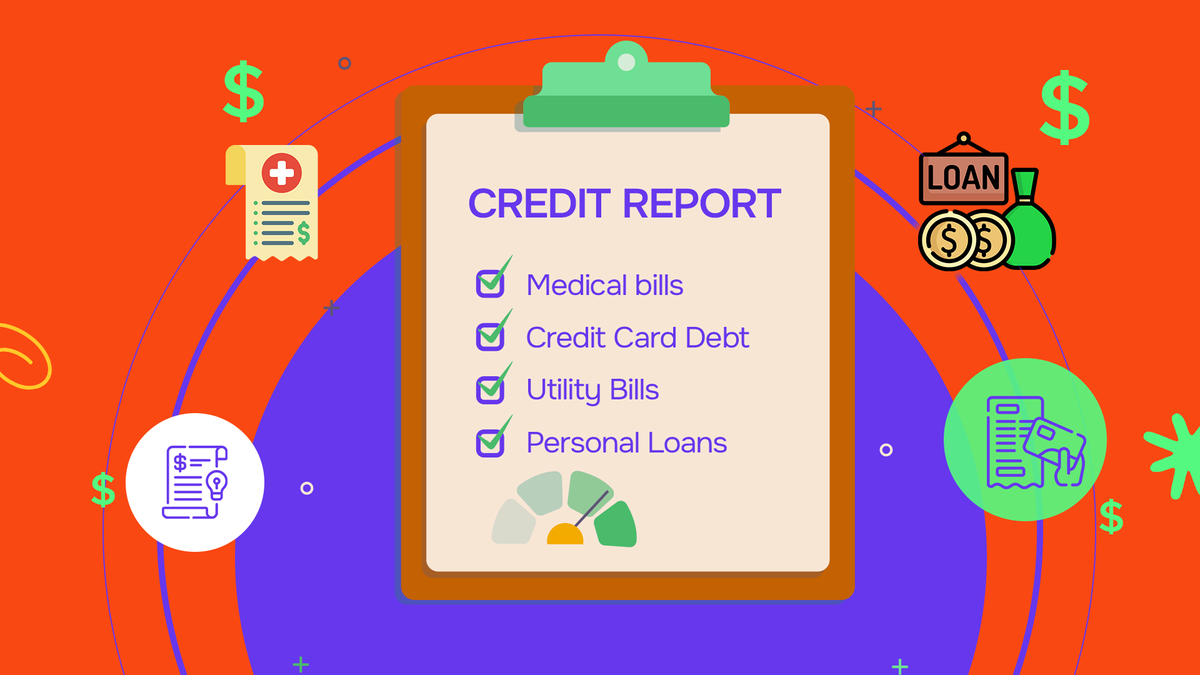How to Remove Collections from Your Credit Report Without Stress
To remove collections from your credit report without stress, you can dispute inaccuracies, negotiate a pay-for-delete agreement, or request goodwill removals. These methods can help improve your credit score and financial health.

To remove collections from your credit report without stress, you can dispute inaccuracies, negotiate a pay-for-delete agreement, or request goodwill removals. These methods can help improve your credit score and financial health.
Collections on your credit report can severely impact your credit score, making it difficult to secure loans or favorable interest rates. Understanding how collections work and how to remove them is crucial. With Credit Veto’s expert guidance, you can tackle these issues without stress.
In this guide, we’ll explore proven methods to remove collections from your credit report and explain how Credit Veto can support you in restoring your credit health.
How Do Collections Affect Your Credit Score?
When a debt goes to collections, it is reported to credit bureaus, significantly lowering your credit score. The impact depends on factors like the amount owed and the duration of the delinquency. Unresolved collections can remain on your report for up to seven years.
Collections signal to lenders that you have struggled to repay debts, making them hesitant to approve new credit or loans. Even if you pay off the collection, the negative mark remains on your credit report, although its impact lessens over time. The more recent the collection, the more it hurts your score.
The type of debt also matters. Medical collections, for example, are often treated more leniently than unpaid credit card or loan debts. However, any collection account can drop your score by 50 to 100 points, depending on your credit history.
Additionally, collections can lower your chances of securing mortgages, car loans, or credit cards with favorable interest rates. Some employers and landlords even review credit reports, meaning collections could affect your job prospects or rental applications.
Understanding how collections damage your credit score highlights why it’s crucial to remove them promptly. With Credit Veto’s expert guidance, you can navigate this process and restore your credit health without stress.
Types of Collections That Can Appear on Your Report
Collections can result from different kinds of unpaid debts. Here’s how each type can impact your credit:
Medical Bills
Medical debt is one of the most common reasons for collections. Even a small unpaid medical bill can appear on your credit report if sent to a collection agency. Many people face this issue due to insurance delays, unexpected emergencies, or high out-of-pocket costs.
Credit Card Debt
Unpaid credit card balances often lead to collections, especially if payments are overdue for more than 180 days. These debts can quickly accumulate due to high-interest rates and penalties, making them a significant factor in damaging your credit score.
Utility Bills
Services like electricity, water, and internet may seem unrelated to your credit score, but missed payments can be reported to credit bureaus. If the utility company sends your account to a collection agency, it will show up on your report and hurt your score.
Personal Loans
Loans from banks, credit unions, or online lenders can enter collections if you miss payments. Since these loans are usually unsecured, lenders rely on credit reporting to push borrowers to repay. Defaulting on personal loans can severely impact your credit profile.
Understanding the types of collections is the first step. Credit Veto can help you dispute errors, negotiate settlements, and remove collections from your credit report without stress.
Proven Methods to Remove Collections from Your Credit Report
1. Dispute Inaccurate Collections
Mistakes on credit reports are common. If a collection is listed in error, you can file a dispute with the credit bureaus. According to the Fair Credit Reporting Act (FCRA), they must investigate and resolve disputes within 30 days.
Steps to Dispute Collections:
- Obtain your credit report from Equifax, Experian, and TransUnion.
- Identify inaccurate collection entries.
- File a dispute with supporting documents.
Why Choose Credit Veto: Credit Veto can handle disputes on your behalf, ensuring accuracy and a faster resolution.
2. Request a Goodwill Deletion
If you’ve paid off a collection, you can request the creditor to remove it as a goodwill gesture. While not guaranteed, it often works for those with a previously good payment record.
When to Use Goodwill Letters:
- You have already paid the debt.
- The missed payments resulted from temporary hardships.
How Credit Veto Helps: We craft effective goodwill letters to maximize your chances of removal.
3. Negotiate a Pay-for-Delete Agreement
In a pay-for-delete arrangement, you agree to pay the debt if the creditor removes the collection from your report. Note that not all creditors offer this option.
Tips for Pay-for-Delete:
- Get the agreement in writing.
- Only negotiate with original creditors or collection agencies authorized to remove entries.
With Credit Veto’s negotiation experts, you can secure better outcomes without stress.
4. Validate the Debt Before Paying
Under the Fair Debt Collection Practices Act (FDCPA), you have the right to request debt validation. Collectors must prove you owe the debt before pursuing payment.
What to Check During Validation:
- The amount owed.
- The original creditor’s information.
- Proof that the debt belongs to you.
Credit Veto verifies debt authenticity to prevent you from paying invalid claims.
5. Settle the Debt and Request a 'Paid in Full' Status
If deletion isn’t possible, settling the debt with a 'paid in full' status can minimize the credit score impact. Settled collections are less harmful than unpaid ones.
How Credit Veto Removes Collections Without Stress
- Expert Dispute Management: We handle all disputes with credit bureaus.
- Custom Goodwill and Pay-for-Delete Letters: Personalized letters with a high success rate.
- Debt Validation Assistance: Ensuring you only pay legitimate debts.
- Credit Score Monitoring: Tracking improvements and alerting you to changes.
Why Trust Credit Veto?
- Proven success in resolving collection issues.
- Expert knowledge of FCRA and FDCPA laws.
- Stress-free, end-to-end service for credit restoration.
Key Takeaways:
- Dispute inaccurate collections immediately.
- Use goodwill letters or negotiate pay-for-delete agreements.
- Validate debts to avoid paying illegitimate claims.
- Settle accounts to improve your credit score.
- Let Credit Veto handle the entire process for you.
FAQ
How long do collections stay on a credit report?
Collections typically remain for seven years from the original delinquency date.
Can Credit Veto remove collections that are paid off?
Yes, we negotiate with creditors and use goodwill letters to seek removals.
Does settling a collection improve my credit score?
Yes, while settled collections still appear, they have less impact than unpaid ones.




Comments ()